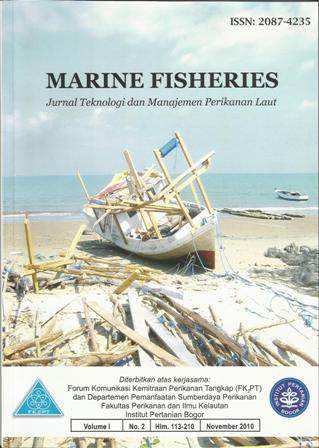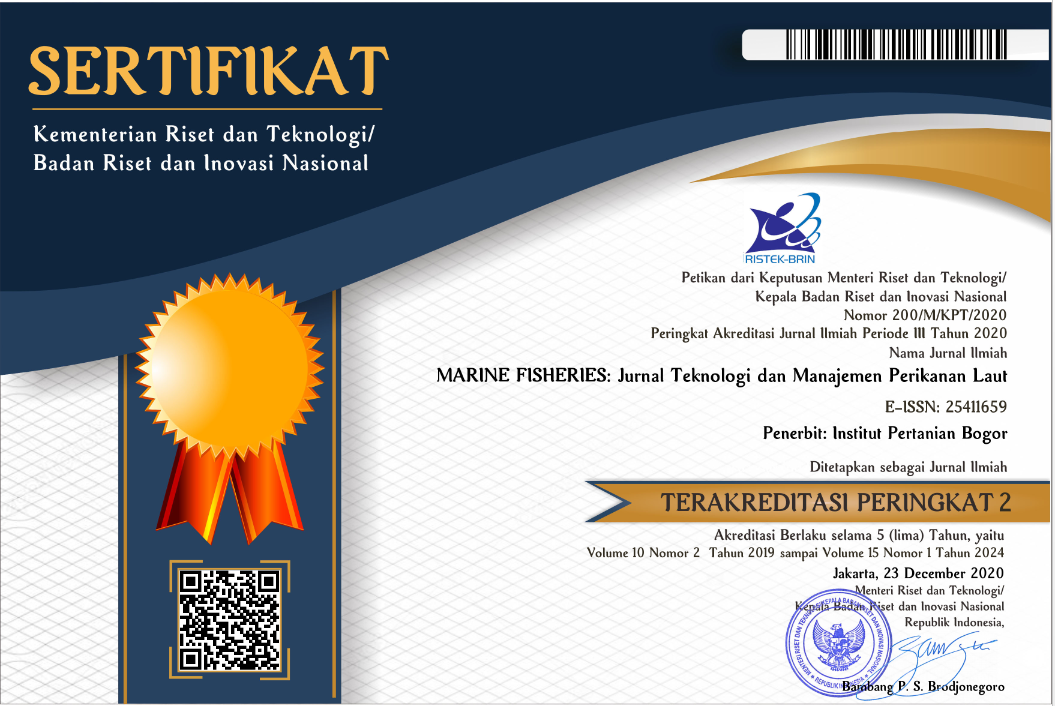PRODUKTIFITAS PRIMER DAN KELIMPAHAN IKAN LAYANG (Decapterus spp.) HUBUNGANNYA DENGAN FENOMENA ENSO, DI SELAT MAKASSAR BAGIAN SELATAN
Abstract
Two species of scad fish (Decapterus russelli and D. macrosoma) is a major catch of purse seine in almost fishing area, its contributed approximately 58%. Production data of scad fish is based on catch data of purse seine which having fishing base in Java (2006-2007). Chlorophyll-a concentration, sea surface temperature and Photosyntetic Available Radiation (PAR) was derived from satellite imagery AQUA MODIS. That data is used to estimate primary productivity with Vertically Generalized Production Model (VGPM). The effect of ENSO (El Niño-Southern Oscillation) to scad fish fisheries also discussed. This research is aimed to get information about the effects of ENSO to primary productivity and abundance of scads in the southern part of Makassar Strait. Results showed scad fish abundance in the waters of the southern Makassar Strait fluctuates according to season, the peak abundance lasted for three months between November to January. Utilization of scad fish as 3th tropic level component showed percentage of utilization is 8,93% in 2006 and 14,59% in 2007. AQUA MODIS image data showed the highest chlorophyll concentrations occurred between February to April each year. While the highest sea surface temperature occurs in November-January period. There are indication that ENSO have indirect effect to chlorophyll-a consentrations and sea surface temperature. Both of them having relations with scad fish abundance in Makassar Strait.Downloads
Published
2012-02-21
How to Cite
PrasetyoA. P., & SuwarsoS. (2012). PRODUKTIFITAS PRIMER DAN KELIMPAHAN IKAN LAYANG (Decapterus spp.) HUBUNGANNYA DENGAN FENOMENA ENSO, DI SELAT MAKASSAR BAGIAN SELATAN. Marine Fisheries : Journal of Marine Fisheries Technology and Management, 1(2), 47-56. https://doi.org/10.29244/jmf.1.2.47-56
Section
Articles
Author(s) who published in this journal agree to following terms:
- Author(s) must understand and agree that the copyright script in published owned by the Marine Fisheries Journal. The copyright includes reproducing and selling the manuscript to all parties.
- Everyone can cite every manuscript published in Marine Fisheries for educational purposes, with the author's name and the Marine Fisheries Journal on reference.









